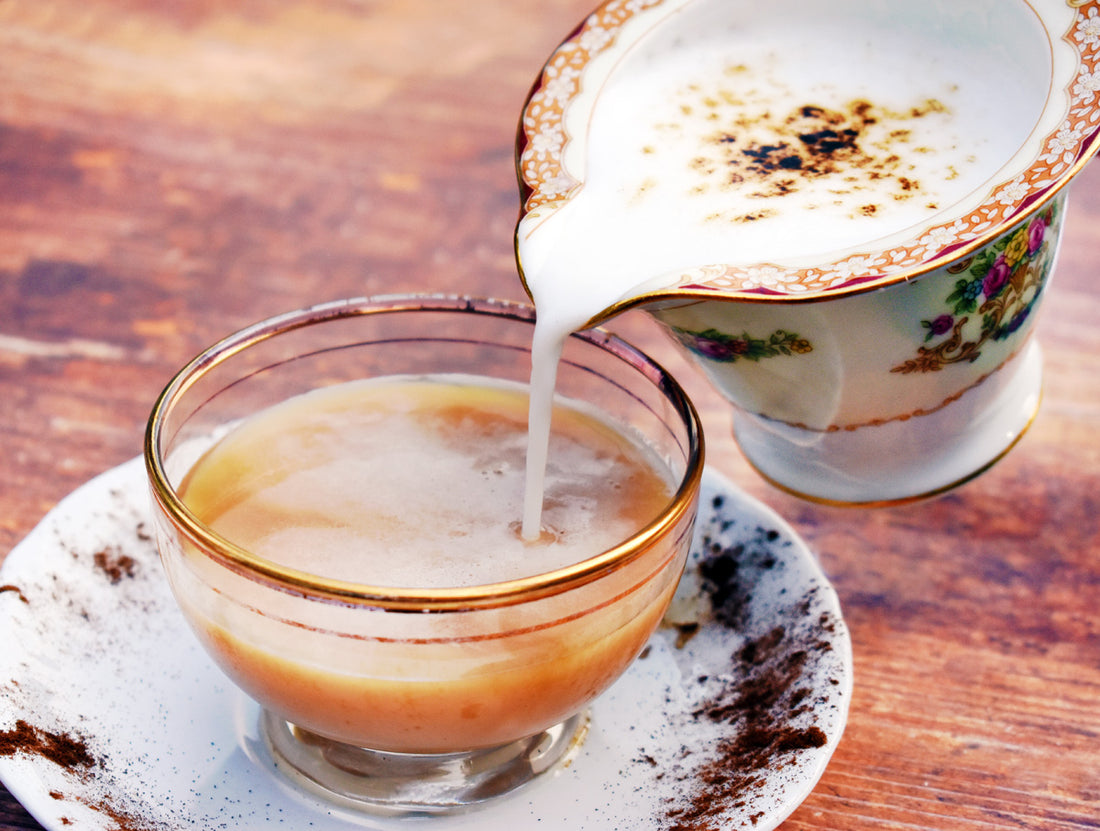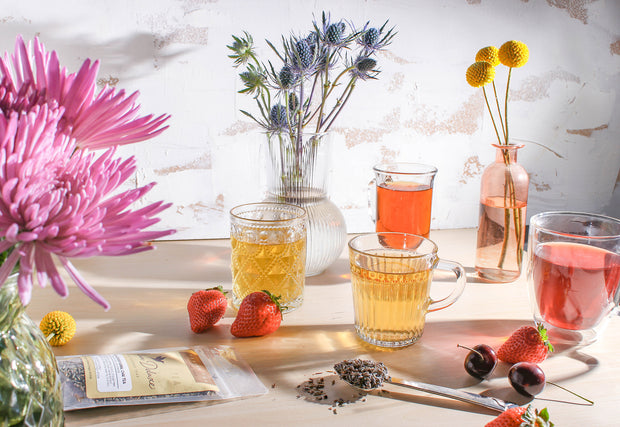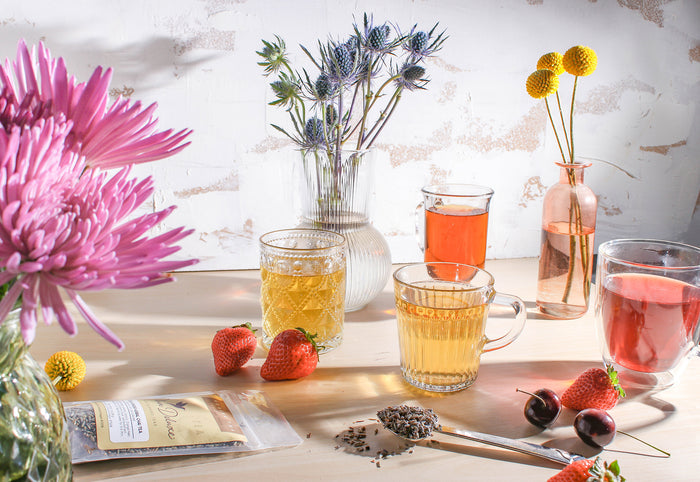Aromatic, spice-filled, transient – my dearest tea friend, chai. This article is all about how to drink chai tea. Whether you’ve been long-time best buds or you’re just meeting each other for the first time, I'll cover everything from the best ways to enjoy chai to specifics on making chai at home as well as how chai and chai lattes are served around our world.
United States Chai: Sweet and Spicy
If you have ever purchased tea or chatted with a friend about what drink to order at the coffee shop, you'll know that chai has become a popular option. Whether it’s summer and you’re looking to cool off with an iced chai latte or it’s a bit cooler out and a hot chai latte or tea is calling your name, our country is sure to offer an option that hits the spot. Let’s take a closer look at the most well-known ways chai and chai lattes are served up here at home so you have the 411 on how to drink chai tea.
The infamous chai latte, with hints of vanilla, cinnamon, cardamom, ground cloves, peppercorn, and black tea mixed with creamy milk and sugar, is sure to satisfy.
Whether you want your chai hot or cold, a great way to make your chai latte is by using a heavily concentrated chai base that is created by brewing fresh chai tea. I like to make a batch of this and store in my refrigerator to enjoy whenever I get the chai itch. I have to admit, this is my favorite chai concentrate for many reasons, but mostly it's due to the fact that I am able to watch the flavor develop and I can customize how strong I’d like my latte. In my case, I can’t get enough of the defining spice characteristics that give chai its great flavor. When I’m ready to enjoy it, I mix this concentrate with either fresh steamed milk or, for an iced chai latte, cold milk, and add in a bit of homemade vanilla simple syrup. You can also add in honey or raw sugar for added sweetness. In no way can you go wrong!

Chai Favorites from Around the World
We’ve discussed some of the favorite United States ways to make and enjoy chai, with its sweetness, milk, and abundance of spices, but what about around the globe? I always find it a bit fascinating to see the variety of cultural differences in enjoying both food and drink. As we will soon see, we all have one thing in common: we love our chai tea.
Chai is a staple of India, and it's where the drink we know and love was first brewed. Like a secret family recipe, you will find a variety of ways this tea tastes and is served. One of the biggest differences is that India uses cut, tear, curl (CTC) tea leaves rather than the whole leaves we find in many American chai teas. This creates an intense flavor profile which is complemented by a variety of spices along with water, milk, and sugar. Depending on what region you’re in within the country, some places will mix CTC leaves, milk, and water and bring to a simmer on the stove for the day, later adding in sugar and a special blend and concentration of their own spices such as cardamom, nutmeg, cloves, ginger, and a variety of several others. Often served up in a handmade clay cup, it is said that these cups provide the crucial ingredient to get the true taste of this drink.
In other parts of Asia, chai is prepared similarly to masala chai from India, but in some regions, like Nepal, po cha is made instead. This tea uses yak butter, tea, and water. Instead of adding sugar for sweetness, salt is added.
In Hong Kong, they make a version of chai called “pantyhose tea.” Made with black tea as well as a blend of others, which will be unique to the tea artist, this tea is brewed with force by straining the tea through a cheesecloth bag for about 15 minutes in boiling water to produce a thick and dark tea. It is served up with condensed milk and as much sugar as you’d like.

Choosing a Chai
You can’t go wrong with any chai choices that Plum Deluxe has to offer, but two of my favorites are Stargazer Caramel Mate Chai and Full Moon Chai. Both sing with those aromatic and lively spices chai is known for, while separately producing two distinctive flavors that have been created from our hand-crafted blends.
Maté is smooth and oh-so-yummy, making this a great choice for a chai concentrate. Mixed with all the best spices, a hint of smokiness, and orange peel, it’s my favorite to add a bit of honey to, which gives it that "just a little extra something" pop. I really love this one served up cold with fresh milk. And I can do you one better: Try is as an iced chai latte you can make at home.
Did someone say vanilla butternut extract? It’s one of my favorite feature flavors in the Full Moon Chai. I love to enjoy this tea as a hot chai latte with frothy milk and a dash of sweetness. I’m sure you’ll love the warmth, depth, and traditional flavors of this beloved chai, which encompasses just the right about of creaminess and sweetness that melts in your mouth.
Just to leave you with a little something sweet(er) to end on, try pairing your chai with a homemade South African milk tart. With all of its flavorful deliciousness and creamy custard filling, it’s one of my new go-tos for pairing with chai. Whether you’re enjoying dessert with a friend, or perhaps just yourself, it’s just the right balance that pairs phenomenally with chai.


![Spring Break Tea Variety Pack [6-Pack Variety of Flavors]](http://www.plumdeluxe.com/cdn/shop/files/spring-break-pack.jpg?v=1740682266&width=165)















